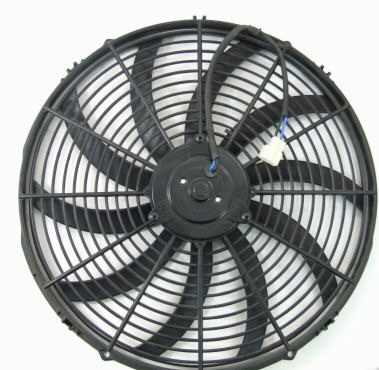Difference between revisions of "Cooling Fans"
| Line 5: | Line 5: | ||
overheating, instability, malfunction and damage leading to a shortened | overheating, instability, malfunction and damage leading to a shortened | ||
component lifespan. | component lifespan. | ||
| Line 16: | Line 13: | ||
air away from the components and draw cooler air over them. Fans attached to components are usually used in combination with a heatsink to increase the area of heated surface in contact with the air, thereby improving the efficiency of cooling. | air away from the components and draw cooler air over them. Fans attached to components are usually used in combination with a heatsink to increase the area of heated surface in contact with the air, thereby improving the efficiency of cooling. | ||
[[File:Cooling fan2.jpg]] | |||
Used to aerate the case of the computer. The components inside the case cannot dissipate heat efficiently if the surrounding air is too hot. Cooling fans move air through the case, usually drawing cooler outside air in through the front and expelling it through the rear. There may be a third fan in the side or top of the case to draw outside air into the vicinity of the CPU, which is usually the largest single heat source. Standard cooling fans are 80 mm, 92 mm, 120 mm or 140 mm in width and length. As cooling fans are often the most readily visible form of cooling on a PC, decorative fans are widely available and may be lit with LEDs, made of UV-reactive plastic, and covered with decorative grilles. Decorative fans and accessories are popular with case modders. Air filtersare often used over intake fans, to prevent dust from entering the case. | Used to aerate the case of the computer. The components inside the case cannot dissipate heat efficiently if the surrounding air is too hot. Cooling fans move air through the case, usually drawing cooler outside air in through the front and expelling it through the rear. There may be a third fan in the side or top of the case to draw outside air into the vicinity of the CPU, which is usually the largest single heat source. Standard cooling fans are 80 mm, 92 mm, 120 mm or 140 mm in width and length. As cooling fans are often the most readily visible form of cooling on a PC, decorative fans are widely available and may be lit with LEDs, made of UV-reactive plastic, and covered with decorative grilles. Decorative fans and accessories are popular with case modders. Air filtersare often used over intake fans, to prevent dust from entering the case. | ||
Revision as of 02:24, 28 July 2012
As processors, graphics cards, RAM and other components in computers have increased in speed and power consumption, the amount of heat produced by these components as a side-effect of normal operation has also increased. These components need to be kept within a specified temperature range to prevent overheating, instability, malfunction and damage leading to a shortened component lifespan.
While in earlier personal computers it was possible to cool most components using natural convection (passive cooling), many modern components require more effective active cooling. To cool these components, fans are used to move heated air away from the components and draw cooler air over them. Fans attached to components are usually used in combination with a heatsink to increase the area of heated surface in contact with the air, thereby improving the efficiency of cooling.
Used to aerate the case of the computer. The components inside the case cannot dissipate heat efficiently if the surrounding air is too hot. Cooling fans move air through the case, usually drawing cooler outside air in through the front and expelling it through the rear. There may be a third fan in the side or top of the case to draw outside air into the vicinity of the CPU, which is usually the largest single heat source. Standard cooling fans are 80 mm, 92 mm, 120 mm or 140 mm in width and length. As cooling fans are often the most readily visible form of cooling on a PC, decorative fans are widely available and may be lit with LEDs, made of UV-reactive plastic, and covered with decorative grilles. Decorative fans and accessories are popular with case modders. Air filtersare often used over intake fans, to prevent dust from entering the case.
